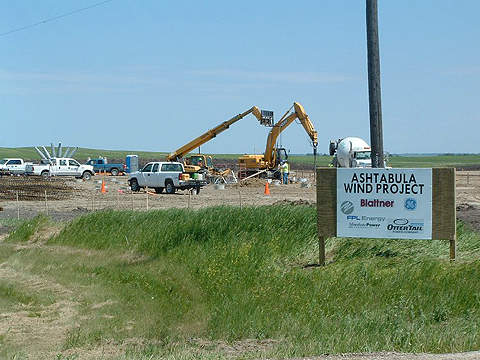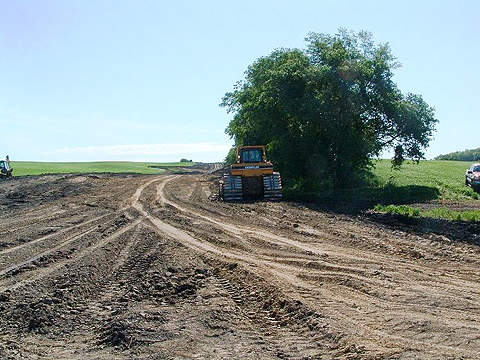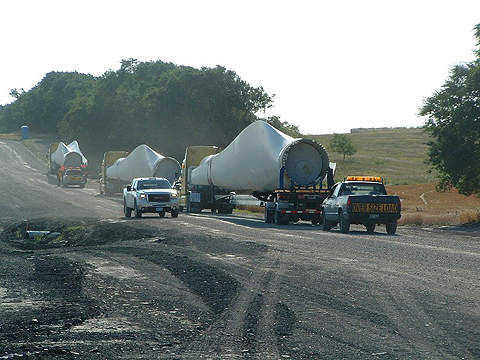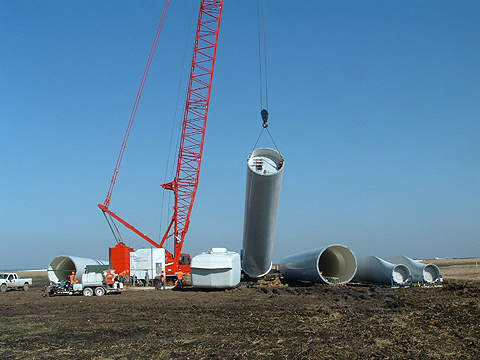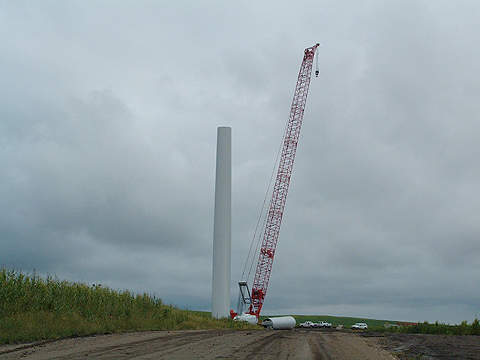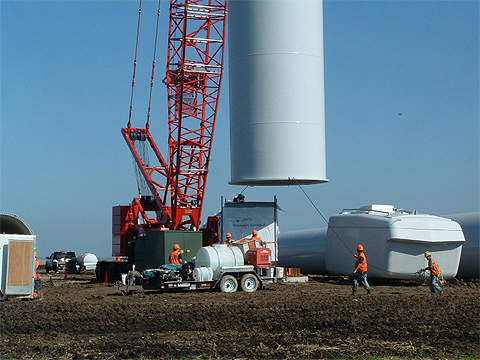The Ashtabula Wind I, II and III Energy Center is the largest wind farm in North Dakota, US.
The farm, named for its proximity to Lake Ashtabula, is split across two sites: Ashtabula I and III which are in Barnes County; and Ashtabula II, which is spread across Griggs County and Steele County. Together, they produce enough electricity to power 99,000 homes.
The three plants are operated by subsidiaries of NextEra Energy Resources, the largest wind power generator in the US. The company operates in 26 states and Canada, and has 18,900MW generating capacity. In North Dakota, it owns seven energy projects.
The Ashtabula Wind I, II and III Energy Center
The wind farm has a total of 250 turbines supplied by GE. The turbines are 260ft in height (from the ground to the centre of the hub), with 120ft-long blades and a rotor diameter of 82.5m. The cut-in wind speed is 8mph and cut-out wind speed is 56mph.
Ashtabula I consists of 131 turbines with 1.5MW rated capacity each. It is spread across 77 square miles, and has a total installed capacity of 196.5MW. NextEra Energy owns and operates 99 of these turbines (148.5MW), while the remaining 32 turbines (48MW) are owned by Otter Tail Power Company. The estimated cost of the site was $350m, and commercial operations began in November 2008.
Ashtabula II is fully owned and operated by NextEra Energy. The site, built at an estimated cost of $190m, has 80 turbines and an installed capacity of 120MW. Commercial operations commenced in 2009.
Ashtabula III generates 62.5MW and was commissioned in 2010. It is built next to Ashtabula I and has 39 turbines with 1.6MW rated capacity.
The wind farm shares transmission assets with Ashtabula I.
Distribution
NextEra sells the 148.5MW generated by the turbines it owns in Ashtabula I to the Minnkota Power Co-operative, as part of a 25-year power purchase agreement. The power is transmitted through a 9.5 mile, 230kV transmission line to Pillsbury substation. The Minnkota Power Cooperative then transmits it from Pillsbury to a substation at Maple River. The transmission lines were laid by M.J. Electric.
Minnkota Power Cooperative purchases 300MW of the wind energy generated in North Dakota. The additional electricity being bought from the Ashtabula I brings its total wind energy purchases to almost 25% of its total portfolio.
Ashtabula II supplies 69MW to Minnkota Power and 51MW to Great River Energy while all of the power of Ashtabula III is transmitted to the Pillsbury substation.
Construction
The wind farm’s construction involved building the operations and maintenance office, building the collector substation and installing the turbines.
An access road had to be laid so that the turbines and other heavy loads could be transported to the project site. The excavation works for the access road began in June 2008.
Each of the towers came in three sections, which needed to be assembled by crane. The sections were placed on straw bales in order to avoid contact with the ground, and plastic covers were used to protect the surface of the sections.
Base foundations for the turbines were dug using backhoes. Two rows of steel bolts were arranged in the concrete base so that they fitted into the holes in the foundation of the turbine tower. The foundations were completed by pouring concrete into the steel cage. All in all, each foundation required 350 yards of concrete and about 40,000lbs of reinforcement.
North Dakota power market
North Dakota has the most affordable electricity prices in the US – due to the fact that 90% of its electricity is produced through coal-fired plants. However, according to the American Wind Energy Association (AWEA), North Dakota ranks number one for wind energy potential in the US. In 2007, the North Dakota authorities passed legislation that 10% of the energy sold in the state should come from renewable energy by 2015.
As of September 2009, North Dakota had an installed capacity of 766.93MW from wind energy, of which 408MW was still under construction. An additional wind farm with 500-700MW of capacity would allow the state to produce an equal amount of power from wind as its coal-fired power plants.

